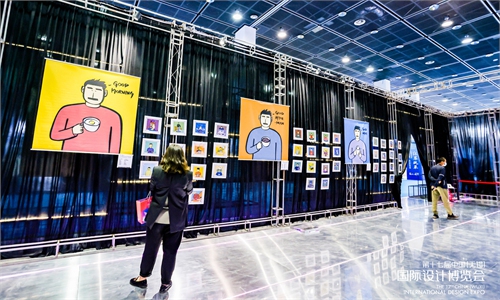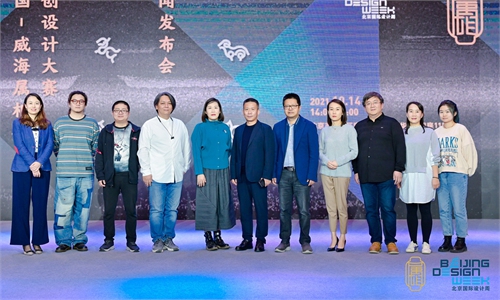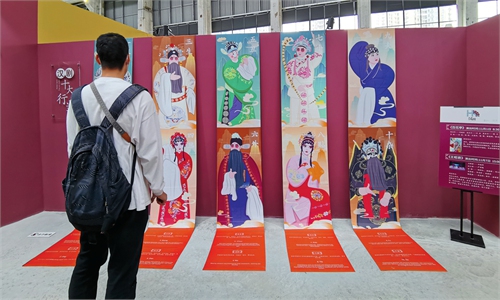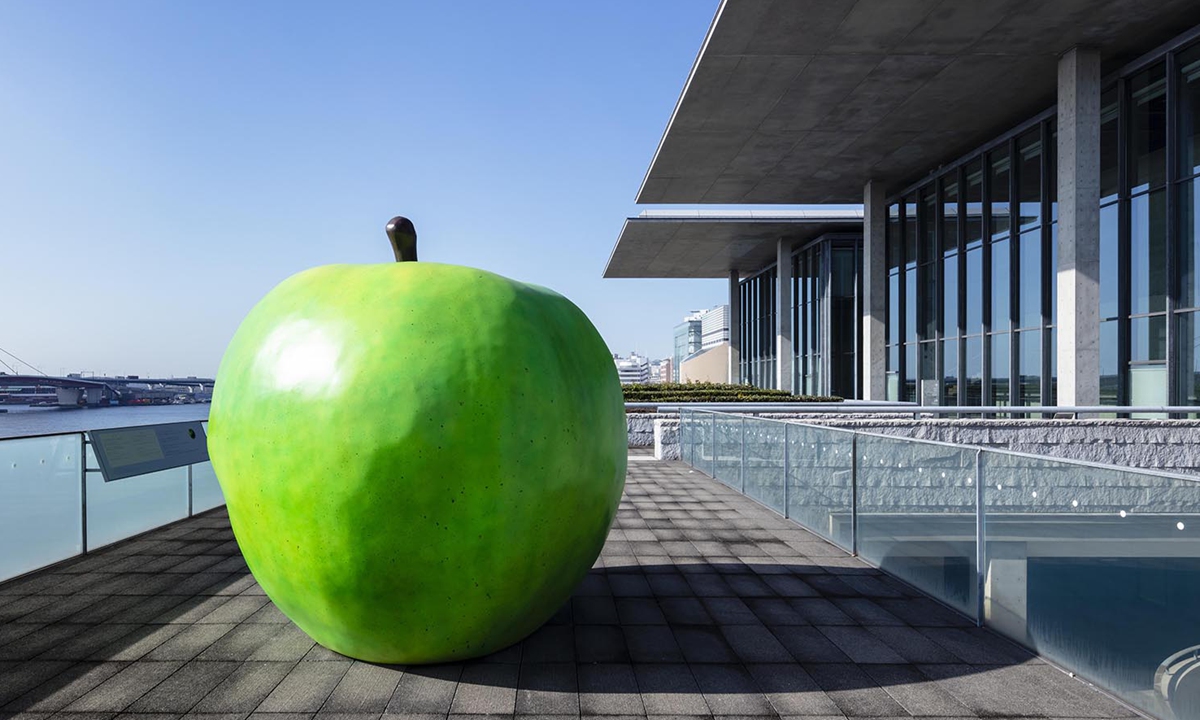
Tadao Ando's Green Apple installation Photo: Courtesy of Ogawa Shigeo

Tadao Ando's Church on the Water in Japan Photo: Courtesy of Shiratori Yoshio
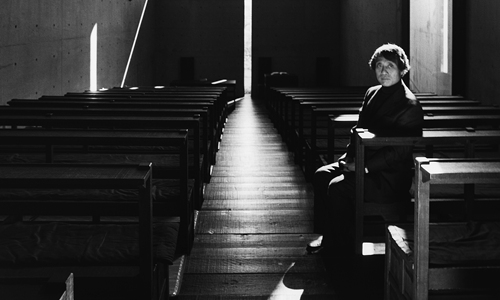
Tadao Ando Photo: Araki Nobuyoshi
The idea of "youth" is uniquely precious to the globally influential Japanese architect Tadao Ando, who told Global Times that it symbolizes a "youthful mindset." The veteran designer has long been using his evergreen heart to experience China through the canon of architecture. Now in his 80s, his wish is "to design China's powerful architectures, what only a big country can have."
The Green Apple
Ando told the Global Times that the embodiment of his "youth" ideal is the bright shamrock green apple installation that he brought to Beijing during his ongoing global touring retrospective exhibition, which was just launched in mid-October.
The "Green Apple" connotes the idea of "staying immature and being full of a challenging spirit," said Ando.
This mindset is a "seed of human faith" for people around the world who need vitality in culture and arts to cope with the challenging situations created by the COVID-19 pandemic, he explained.
Often called a "concrete poet," he has prepared a new special gift for the Beijing stop of his world tour, which kicked off in Tokyo and first arrived in China's Shanghai.
His 1994-95 project Meditation Space, UNESCO in Paris has been replicated at the Beijing venue. The space is considered one of his most iconic concrete designs included in his "spiritual space" collection.
The mediation space stands for the acceptance of diverse culture, and represents UNESCO's pursuit to transcend all religions and groups to bring peace to the world.
"Having it debut here, seems like the designer reckons that Beijing carries the same characteristics - the peace, cultural diversity, and respects of differences that his work wants to convey," Lei Ming, an art critic, told the Global Times.
The architect also told the Global Times that some of his early sketches - many of which were jotted down on square hotel napkins - photographs and models are particularly "meaningful" for him because they witness his journey from a "green hand" to a veteran.
"I had to spend more energy than could be seen to cope with the stringent conditions of them [these early projects]. If you can feel the heart of 'youth' through the abstract drawings I made, I'll be very happy," said Ando.
'Powerful designs'
Besides revealing he has a few projects "in process" in Beijing, Ando noted that when it comes to designing projects for China, even the unfinished ones still "stimulate his rich imagination."
The architect first came into the eyes of the Chinese public in 2005, when he debuted with his exhibition Architecture and Environment in Shanghai.
He started to accept more design offers on projects in mega cities such as Beijing and Shanghai, as well as in smaller cities known for rich local culture such as Shunde in South China's Guangdong Province and Sanya in Hainan Province.
Believing that "China has entered the period of deepened cultural maturity," Ando said that today's fast-developing Chinese society no longer merely needs "large-scale" buildings, but spaces with "soft power," in other words, culture.
"In my work, there are more projects that respond to the 'richness' of local environmental contexts, such as revitalizing old buildings with a view to cultural planning and establishing design dialogues between tradition and modernity and not just large-scale reconstructions," said Ando.
The He Art Museum in Shunde is a great example of Ando's pursuit to fuse the old with the new. The project, which was completed between 2015 to 2020, is a modern art gallery that hosts Picassos but is located in a Chinese town known for its Cantonese dishes and the distinctive Chinese Lingnan culture.
Ando said he believes that the power of architecture can only be maximized when it is part of people's everyday lives.
"Architecture is not only about the designer's expression, it exists for the people living in it. In this sense, it goes beyond the cultural differences between China and Japan," said Ando.
The Shanghai Poly Grand Theater was one of his most talked about early projects in China. Aiming to enrich the cultural lives of residents through various performances, the theater has become one of Shanghai's important cultural landmarks.
When asked what he values the most in creating projects for China, he said that he now wishes "to make powerful designs that only a big country can have."
"I believe China can create a unique modern architecture history," he added.
Having been a boxer and a truck driver before learning how to become an architect on his own, the Pritzker Prize-winning master has experienced many ups and downs in life. Yet he continues looking confidently forward to reaching 100, even though he had to have five organs removed from his body due to cancer.
"It is more about a healthy spirit than my physical health," Ando told the Global Times, adding that he plans to continue his architecture career even though he knows that it will end one day.
"But I think, that day should be decided by me," he added.
